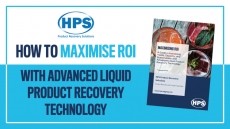New scanner to improve baking batches
dough will be perfect for making bread, cakes and other baked goods
has been developed by the UK's largest independent food and drink
research group, writes Chris Mercer.
The scanner has been designed to fit inside dough mixers and from there is able to monitor detailed changes and characteristics in the dough, such as moisture content, down to the number of hydrogen bonds formed, and protein content.
Campden and Chorleywood Food Research Association (CCFRA) has been developing the infrared scanner for the last few years according to the group's baking business manager, Dr. Paul Catterall.
Catterall said that providing manufacturers knew the characteristics they wanted, the scanner could tell them when the dough had been mixed to give the optimum texture or product.
This, he said, should improve quality and consistency in baked goods, therefore reducing the amount of produce lost through wastage and increasing potential output.
"There is a need for uniform products on the market and so understanding what is happenning inside bakery products as they are made is always important," said Catterall.
Infrared scanners are not especially new to the food industry, having been used to test the quality of raw materials since the 1970s, but CCFRA is the first group to adopt the technology to the baking process.
The group has yet to test the scanner commercially but is currently seeking collaborators and expects it to be on the market in the near future.
Second new scanner to help food researchers
CCFRA has also developed a computer tomography scanner, like those used in hospitals for x-rays, which is designed to have a baking chamber fitted inside it to allow researchers to monitor the progress of baked goods as they cook.
The scanner will send out images of the product in the baking chamber. Catterall said: "It means you can bake various types of bread or cakes and in the scanner watch, for example, the development of texture or the formation of bubbles, things that have never been seen before."
Excessive crust and bubble formation during baking are both potential pitfalls for bakers, which might make the difference between products good for retailers' shelves and those fit only for the bin.
Catterall believes that researchers should be able to use the CT scanner to see when such problems occur during baking and so perhaps understand more about why they occur and how to prevent and control them.
"We are still developing this and it has taken quite a few years to get the technique right, but the images I have seen so far have been of a very good quality," said Catterall.
Other research groups have also been developing ways of monitoring and controlling the baking process to meet bakers' needs for an ever more consistent product at the highest quality.
At this year's Food and Bake conference in March, UK-based Stable Micro Systems displayed its new constant strain inflation rate facility which claims to enable the bakers themselves to monitor dough inflation and alter the inflation rate of the dough bubble as its volume changes.










